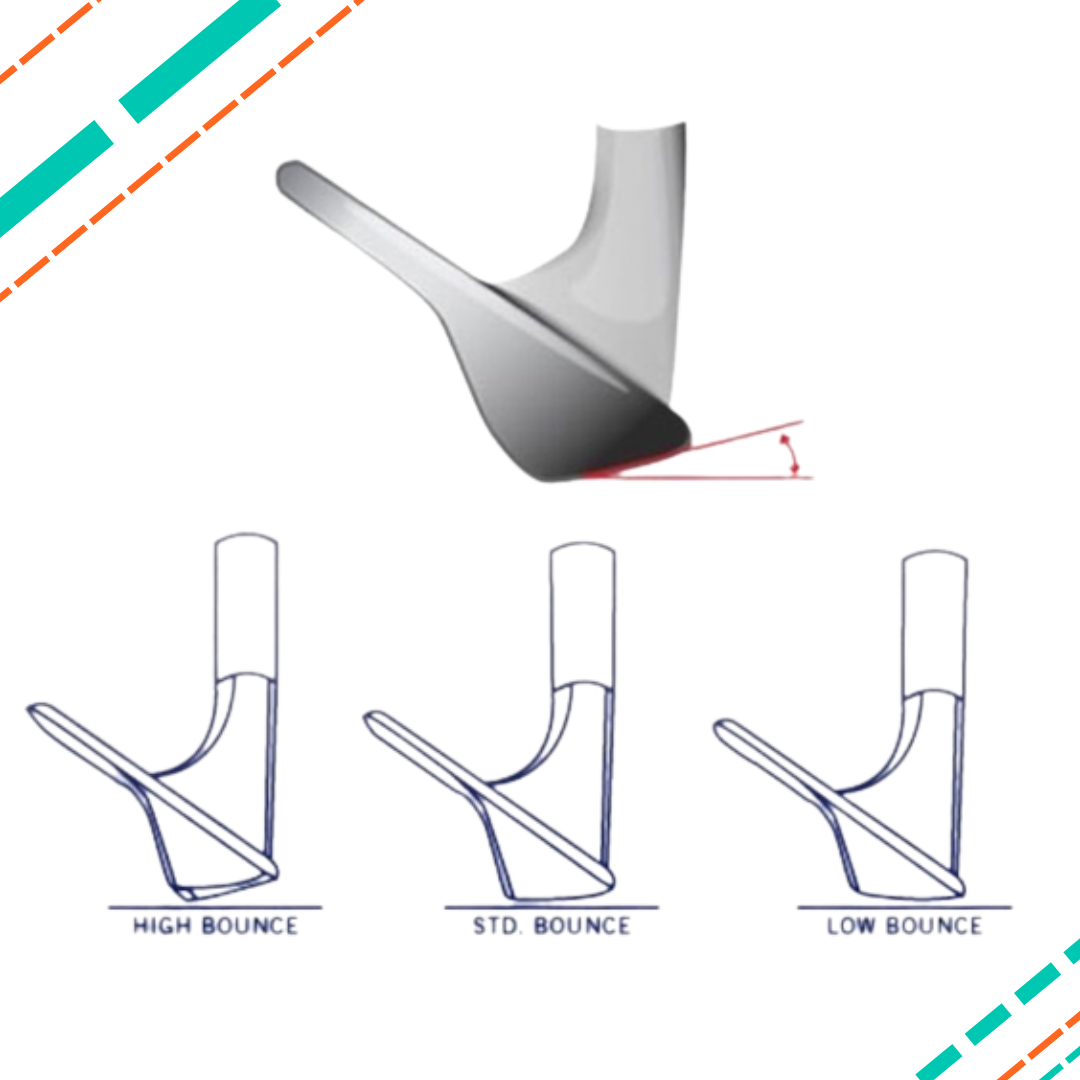Wedge bounce is the angle between the leading edge and the lowest point of the club's sole. This measurement is typically noted in degrees and is integral to how the club interacts with the turf or sand at impact.
Why Does Wedge Bounce Matter?
The amount of bounce a wedge has can influence how easily your club 'bounces' off the ground or sand, instead of digging into it. Too much bounce can cause the club to skim over the surface, leading to thin or skulled shots. Conversely, too little bounce can result in the club digging too much, causing fat or chunked shots.
Choosing the right amount of bounce depends largely on two factors: the conditions you usually play in and your swing style.
-
Playing Conditions: If you frequently play in soft conditions or fluffy sand, a higher bounce angle — 10 degrees or higher — can help prevent the club from digging too deeply. On the other hand, if you typically play on firm turf or hard-packed sand, a lower bounce angle — 6 degrees or lower — might be more suitable.
-
Swing Style: If you have a steep angle of attack and tend to take large divots, a high-bounce wedge can help mitigate the depth of your divots. However, if you have a shallow angle of attack and take little to no divot, a low-bounce wedge might suit your game better.

If you're looking to split the difference, a standard or medium bounce — between 6 and 10 degrees — can be very adaptable, playing well with an opened or a square face. This makes it a solid choice as you figure out how you play.
Brands and Models: Bounce Variations
Different golf equipment manufacturers offer various models and designs of wedges, each with a unique bounce. Here are a few examples:
-
Titleist Vokey SM8 wedges: These popular wedges are designed with bounce options ranging from 4 to 14 degrees. A golfer who plays on softer greens or has a steep swing angle might opt for a higher degree, while those who play on firmer courses or have a shallower swing might choose a lower degree.
- Cleveland 588 wedges: Known for their versatility, 588 wedges offer different bounce options to cater to a wide range of players and playing conditions. The Tour Zip Grooves and Laser Milled technology also help to maximize spin for greater control and precision.
-
Callaway Mack Daddy wedges: The Mack Daddy series offers multiple grind options, allowing golfers to choose a wedge bounce that fits their playing style and course conditions best.
-
Ping Glide 3.0 wedges: The Glide 3.0 wedges are designed with custom-engineered grooves for greater spin and control. They offer a variety of sole grinds including Standard Sole (SS), Wide Sole (WS), and Thin Sole (TS) to cater to various swing styles and playing conditions. The WS has the most bounce, while the TS offers the least bounce.
- Scratch Wedges: Scratch Golf offers a highly customizable experience with its wedges, offering three different sole grinds with varying bounces to accommodate various swing styles and turf conditions. Scratch wedges are well-regarded for their high spin rates and versatility.
Understanding and utilizing wedge bounce can significantly improve your short game. Remember, there's no one-size-fits-all in golf, and it's always best to experiment until you find what works best for you. Get the advice of your local PGA professional if you can!
And if you find you'd like to try a different wedge, no sweat — we have a 30-day 100% money-back guarantee, so there's no risk to exploring our full selection.


